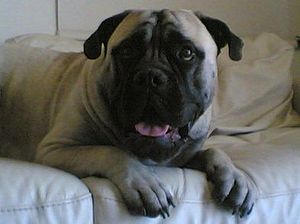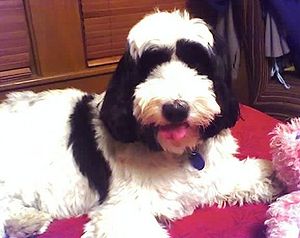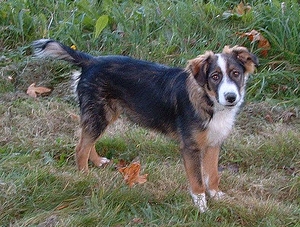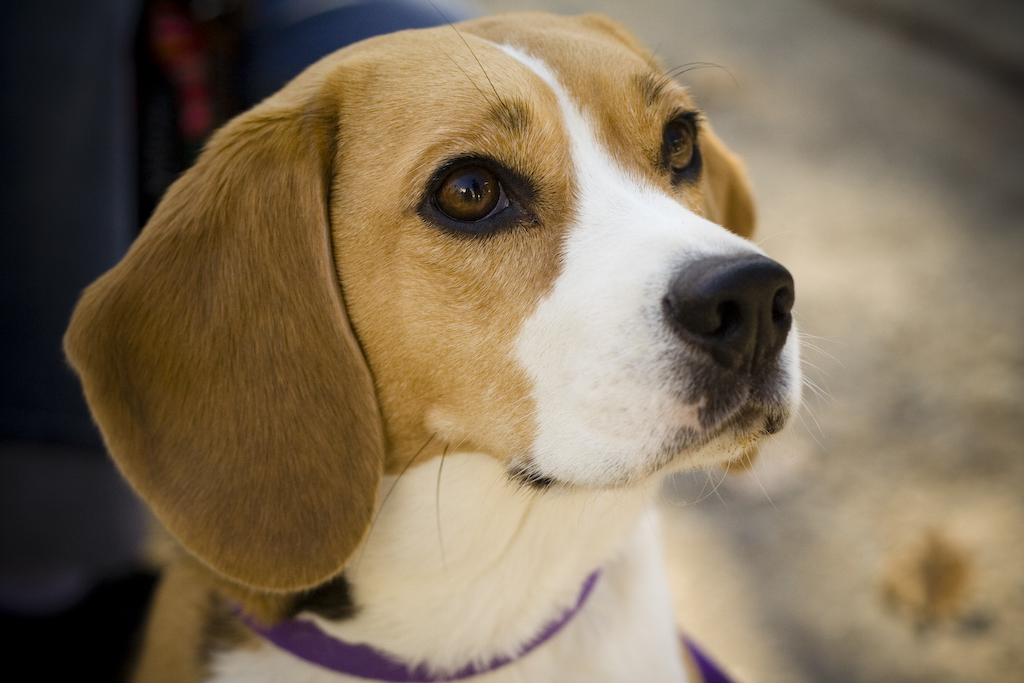 |
| Vital Statistics: |
| Place of Origin: England |
| Group: Guard dog |
| Height: males 25-27 in., females 24-26 in. |
| Weight: males 110-130 lbs., females 100-120 lbs. |
| Life span: 7-9 yrs. |
| Trainability: moderate, can be willfu |
| Good with children: yes, with supervision |
| Good with other pets: yes, with household pets, dogs of opposite gender |
What is the origin of the Bullmastiff?
The Bullmastiff was developed in the early 1800s, a cross between bulldogs and mastiffs. Gamekeepers in the British Isles needed a dog on their nightly rounds to help capture poachers. Known as the “Gamekeepers Night Dog:, the Bullmastiff would catch and subdue the poacher without mauling him.
What does the Bullmastiff look like?
This massive, powerful dog is 24-27 inches tall and weighs from 100-130 lbs. depending on gender. The large head wrinkles when alert. The broad muzzle is dark. Ears are v-shaped and carried close to cheeks. Eyes are medium size and dark. The coat is short and dense. Colors are red, fawn or brindle. Weekly brushing and bathing when necessary will keep the coat in good condition.
What is the temperament of the Bullmastiff?
This is not a dog for a timid owner. The Bullmastiff can be stubborn and needs early firm, but kind and consistent training and socialization to avoid unwanted behavior. Bullmastiffs are very sensitive to their owners moods and would give their lives protecting them. The Bullmastiff is good with children, but an adult should be present and watchful. They don’t get along with dogs of the same gender, but will accept other pets. A daily walk and moderate exercise works for this dog and it can adapt to apartment living.
What is the Bullmastiff used for?
Originally an estate guardian, the Bullmastiff has been used in army and police work and as a watchdog for the diamond mines of South Africa. It is an excellent watchdog and bodyguard. With the right owner, it is a loving companion.
Possible Health Issues
Hip dysplasia, heart problems (pulmonic stenosis, narrowing of valve between right ventricle and heart), bloat/gastric torsion, urinary tract stones, breathing difficulties, cancer.
- Akbash Dog
- Anatolian Shepherd Dog
- Black Russian Terrier
- Boerboel
- Burnese Mountain Dog
- Ca de Bou
- Cane Corso
- Chinese Shar-Pei
- Chow Chow
- Estrela Mountain Dog
- Fila Brasileiro
- Giant Schnauzer
- Great Pyrenees
- Hokkaido Dog
- Kai Ken Dog
- Kangal Dog
- Karelian Bear Dog
- Kerry Blue Terrier
- Komondor
- Kuvasz
- Mastiff
- Neapolitan Mastiff
- Norwegian Elkhound
- Presa Canario
- Pyrenean Mastiff
- Rafeiro do Alentejo
- Rhodesian Ridgeback
- Rottweiler
- Sanshu
- Shikoku Inu
- Tibetan Mastiff
- Tosa Ken
- Airedale Terrier
- Beagle
- Bedlington Terrier
- Bluetick Coonhound
- Border Collie
- Border Terrier
- Bull Terrier
- Bulldog
- Ca de Bou
- Cavalier King Charles Spaniel
- Clumber Spaniel
- Collie
- Curly-coated Retriever
- Dandie Dinmont Terrier
- English Cocker Spaniel
- English Foxhound
- English Setter
- English Springer Spaniel
- English Toy Terrier
- Flat-coated Retriever
- Golden Retriever
- Greyhound
- Harrier
- Jack Russell Terrier
- Lakeland Terrier
- Lancashire Heeler
- Llewellyn Setter
- Manchester Terrier
- Mastiff
- Norfolk Terrier and Norwich Terrier
- Old English Sheepdog
- Old English Terrier
- Otterhound
- Parson Russell Terrier
- Shetland Sheepdog
- Smooth and Wire-haired Fox Terrier
- Sussex Spaniel
- Welsh Terrier
- Whippet
- Wire Fox Terrier
- Yorkshire Terrier



